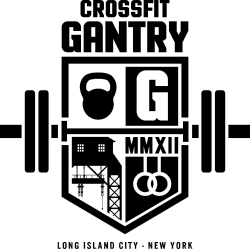This week we will be starting our 4 month Strength Cycle. We will be using the 5/3/1 Program, which is the simplest and easiest way to add pure strength. The original T-Nation article
5/3/1: How to Build Pure Strength
was published in 2009 and the program has stood the test of time.
We have used 5/3/1 at CrossFit Gantry for the last 4 years during the fall season. We have made some adjustments to the program to fit our gym population. We will be doing two 3 Week cycles followed by a reload week. After each successful cycle you will add 10 lbs to your previous 1Rm for Squats and Deadlifts, and 5lbs to your Press, BEFORE doing your calculations. So each week, you will be lifting just a little bit more. In addition, we have added what we call the Rule of 10, 8 and 6. On a week where you see 5+, 3+ or 1+, the + represents at least 10, 8 or 6 reps respectively. You must complete a minimum of 10, 8, or 6 reps on those weeks, EITHER unbroken or in one max set, and then however many more it takes you to get to the total ie. 8+2, 5+1, 3+3.
Below is an excerpt from the article about the basics of the program. Read the full article for further detail.
5/3/1 by the Numbers
In 5/3/1, you’re expected to train three or four days a week. Each workout is centered around one core lift – the parallel squat, bench press, deadlift, and standing shoulder press.
Each training cycle lasts four weeks, with these set-rep goals for each major lift:
Week 1 3 x 5
Week 2 3 x 3
Week 3 3 x 5, 3, 1
Week 4 Deload
Then you start the next cycle, using heavier weights on the core lifts. And that’s where a seemingly simple system starts getting a little more complicated.
You aren’t just picking a weight to lift five times or three times or one time per set. You’re using a specific percentage of your one-rep max. And not your full 1RM. The calculations are based on 90% of it.
So if your 1RM in the bench press is 315 pounds, you use 285 (90%) as the base number for your training-weight calculations. Here’s how it works:
| Week 1 | Week 2 | Week 3 | Week 4 | |
| Set 1 | 65% x 5 | 70% x 3 | 75% x 5 | 40% x 5 |
| Set 2 | 75% x 5 | 80% x 3 | 85% x 3 | 50% x 5 |
| Set 3 | 85% x 5+ | 90% x 3+ | 95% x 1+ | 60% x 5 |
When you see 5+, 3+, or 1+, that means you do the max reps you can manage with that weight, with the goal of setting a rep record in each workout.
Let’s walk through the Week 1 workout for bench press. Using the example above, if your 1RM is 315, you calculate all your percentages from 90% of that max, or 285 pounds.
So you’re using 185 (65% of 285) x 5, 215 x 5, and 240 or 245 x 5 or more. (In my 5/3/1 ebook, I provide detailed lists of weights and percentages so you don’t have to carry a calculator with you to the gym.)
After you finish the first cycle, you add five pounds to your 1RM calculations for the two upper-body lifts and 10 pounds to your 1RM for the squat and deadlift.
These specific instructions for 1RM percentages and monthly progression are what set 5/3/1 apart from less useful systems. When I see a program that says three sets of eight reps? That’s the stupidest fucking thing ever.
If it doesn’t have a specific percentage based on a specific max, it’s useless. That’s the hallmark of someone who doesn’t understand basic programming.
One Goal Per Workout
With 5/3/1, you accomplish a goal every workout. Some programs have no progression from one day to the other.
Another unique feature is that final balls-out set in each workout. You don’t have to go beyond the prescribed reps if you don’t feel like it, but there are real benefits to doing so.
I’ve always thought of doing the prescribed reps as simply testing your strength. Anything over and above that builds strength, muscle, and character.
Yes, that last set is the one that puts hair on your chest, but the system doesn’t work without the sets that precede it. I tried cutting those out but I got smaller and weaker. There might be only one really hard set, but the other sets are still quality work.
